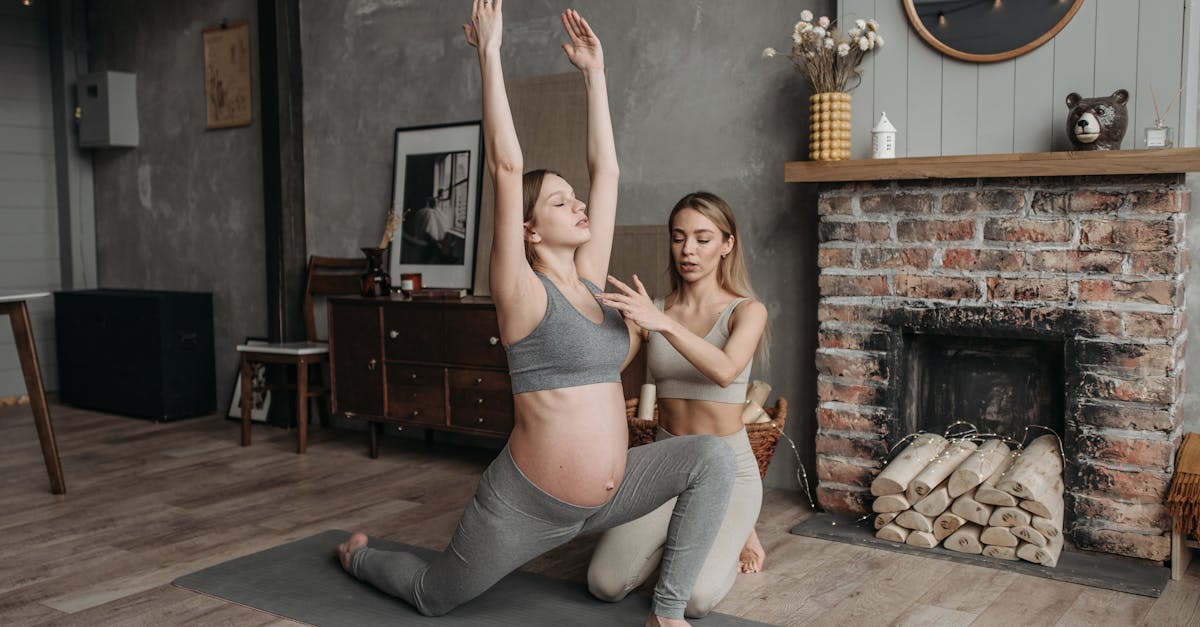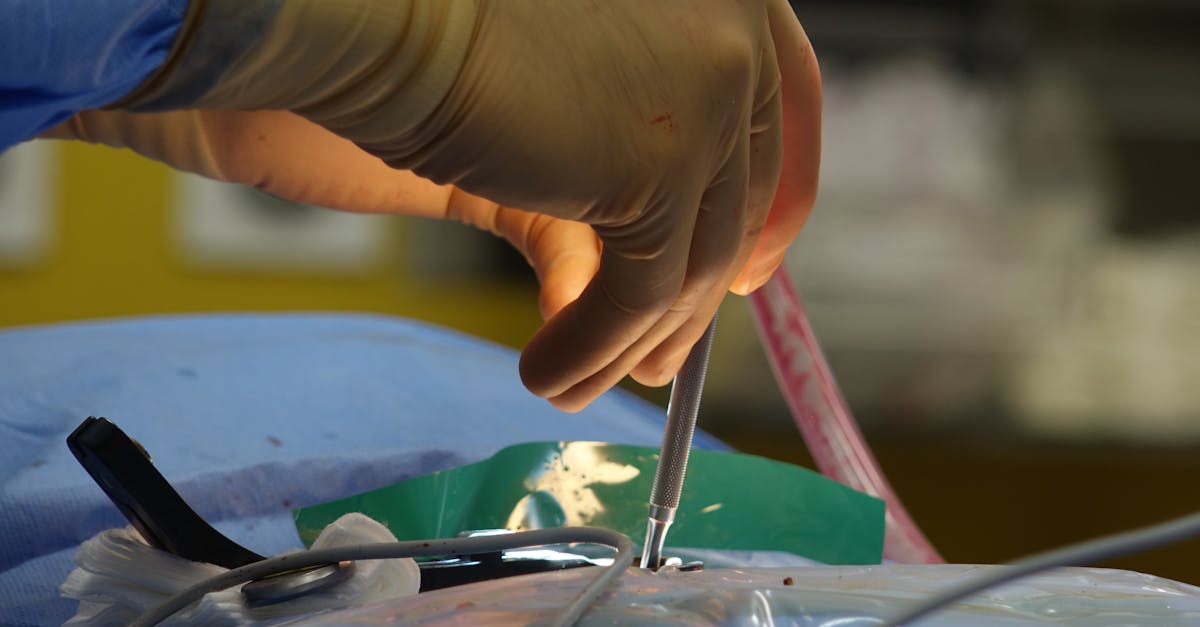Suffering from discomfort due to anterior pelvic tilt? Discover how Pulse Align can help.
In Short: Anterior pelvic tilt causing you pain and discomfort? This common postural issue is linked to bad posture and can lead to complications such as forward head posture and rounded shoulders. Strengthening your core and improving your posture with targeted posture exercises can lead to significant relief. Pulse Align Clinics propose a unique, simple approach to posture correction that emphasizes mindful movement and core strengthening, helping you reclaim your health and balance. Reclaim your health and wellness at Pulse Align Clinics. Book your appointment today!
Are you struggling with lower back pain and poor posture?
Discovering how Pulse Align can assist with anterior pelvic tilt can be the key to improving your posture and alleviating discomfort. Studies show that 80% of adults suffer from bad posture, which can lead to symptoms such as lower back pain and forward head posture. By integrating core strengthening, posture exercises, and techniques like yoga for posture and the Alexander Technique, Pulse Align offers a holistic approach to posture correction. Take the first step towards a balanced and aligned body by embracing Pulse Align’s innovative methods to address rounded shoulders and other postural issues.

Discover How Pulse Align Can Assist with Anterior Pelvic Tilt
Are you noticing discomfort due to poor posture? This article will explore how posture improvement and neuromuscular recalibration can be a game-changer for those experiencing challenges related to anterior pelvic tilt. Finding effective solutions can be overwhelming, but Pulse Align offers a gentle, insightful approach that may help bring balance back to your body.
Understanding Anterior Pelvic Tilt and Its Effects
Anterior pelvic tilt is a postural imbalance that occurs when the front of the pelvis tilts downward and the back tilts upward. This condition can lead to increased tension and discomfort in various areas of the body. By understanding how to better align our posture, we can work towards achieving a harmonious state. Pulse Align employs gentle stimulation techniques aimed at reshaping muscle tone and restoring natural balance, providing clients with the ability to feel more aligned and stable.
The Holistic Approach at Pulse Align
Pulse Align emphasizes a holistic method to well-being, recognizing the body’s inherent ability to heal itself. Instead of focusing on specific symptoms, our goal is to promote muscle tone symmetry and overall functional balance. Techniques such as mindful movement, Pilates for posture, and even the Alexander Technique help clients foster a positive relationship with their bodies. Clients have shared their journeys about how they have enhanced their posture naturally and reduced tension through our support. Each testimonial highlights how leans towards natural methods lead to improved overall wellness.
Client Experiences and Transformations
Many clients have expressed satisfaction with their experiences at Pulse Align. One said, “Since beginning my journey, I have noticed a substantial improvement in my ability to improve posture naturally and feel more balanced.” Another client remarked, “I didn’t expect how significant my posture would change simply by focusing on my alignment with the help of Pulse Align’s gentle guidance.” Such positive transformations affirm the benefits of our non-invasive, family-friendly services suitable for clients of all ages, including children and pregnant women.
Start Your Wellness Journey with Pulse Align
Ready to take the first step towards improved well-being? At Pulse Align, we invite you to explore our unique approach to posture correction in cities such as Montreal, La Prairie, Terrebonne, Chicoutimi, and more. Our clinics offer welcoming environments where you can learn more about how we facilitate natural body function restoration and support muscle tone symmetry. Book a consultation today and experience the benefits of a more aligned and balanced life!
Remember, while we provide valuable services, Pulse Align complements your existing healthcare journey, allowing you to explore new avenues for wellness. With us, you can embark on a path towards enhanced posture and well-being that suits everyone in your family.
How Pulse Align Can Assist with Anterior Pelvic Tilt
- Postural Assessment: Comprehensive evaluation to identify misalignments.
- Core Strengthening: Focus on exercises that enhance abdominal and gluteal muscles.
- Mindful Movement: Techniques to promote body mechanics awareness.
- Ergonomic Guidance: Advice on proper sitting and standing practices.
- Stretching Routines: Targeted stretches to alleviate tight hip flexors.
- Holistic Approach: Integration of various techniques for overall well-being.
- Client-Centered Care: Personalized support tailored to individual needs.
- Community Wellness: Fostering a supportive environment for recovery.

Discover How Pulse Align Can Assist with Anterior Pelvic Tilt
An increasing number of individuals are facing discomfort linked to anterior pelvic tilt, a common postural imbalance that promotes issues such as bad posture, forward head posture, and rounded shoulders. If these conditions resonate with you, understanding how Pulse Align can guide you in achieving proper alignment through a holistic recalibration approach is essential. This article will explore the principles of neuromuscular health, the integration of effective posture exercises, and the benefits of mindful movements practices, which are core to Pulse Align’s methodology.
Understanding the Roots of Anterior Pelvic Tilt
Anterior pelvic tilt occurs when the front of the pelvis drops excessively, often attributed to prolonged sitting and a lack of core engaging exercises. This alignment issue not only promotes hyperlordosis—an excessive curvature of the lower spine—but may also lead to problems related to kyphosis and scoliosis. Recognizing the implications of this pelvic misalignment is the first step toward enhancing your posture and overall wellness.
Core Strengthening: A Fundamental Approach
Effective core strengthening exercises are a cornerstone of addressing anterior pelvic tilt. Targeting your abdominal and gluteal muscles through specific trunk exercises can help restore muscle tone symmetry. Exercises such as gluteal bridges and planks improve alignment and support, making them integral parts of any routine for posture correction. Additionally, including Pilates for posture offers benefits for enhancing your awareness of body mechanics.
Mindful Movement Techniques for Holistic Health
Incorporating practices like the Alexander Technique and Feldenkrais Method can significantly benefit individuals struggling with anterior pelvic tilt. These approaches emphasize proper coordination and alignment, allowing individuals to experience a newfound sense of balance. Engaging in yoga for posture is another effective method, promoting body awareness and enhancing flexibility, which ultimately aids in correcting poor posture.
Importance of Ergonomics in Daily Life
Making ergonomic adjustments in your workspace can greatly influence your posture. Maintaining a proper sitting posture, using a standing desk, and ensuring your workstation supports your body’s natural alignment can alleviate strain on your back and pelvis. Simple modifications can foster a supportive environment that encourages healthy posture throughout your workday.
Stretching Exercises for Improved Flexibility
Implementing targeted stretching exercises into your routine is critical in alleviating tightness in the hip flexors, a common contributor to anterior pelvic tilt. Incorporate a routine that includes lunges and hip flexor stretches to counteract the effects of prolonged sitting. Revitalizing your body with these movements helps promote greater overall comfort and mobility.
Taking Action Towards Better Posture
Are you ready to embark on your journey to rectify anterior pelvic tilt? By making the commitment to engage in core strengthening, practicing mindful movements, and optimizing ergonomics, you can reclaim your health and wellness. At Pulse Align, personalized consultations are available to design a tailored exercise plan highlighting these principles. Don’t miss this opportunity to enhance your alignment and experience transformative changes. Book a consultation today and take your first step towards a healthier lifestyle that embraces the essence of balance and stability.
| Aspect | Pulse Align Approach |
|---|---|
| Core Strengthening | Promotes stability through targeted exercises enhancing overall body balance. |
| Movement Awareness | Encourages mindfulness of body mechanics to foster natural alignment. |
| Gentle Techniques | Utilizes soft stimulation methods to assist in natural body recalibration. |
| Ergonomic Guidance | Advises on creating supportive environments for optimal posture throughout daily activities. |
| Postural Assessment | Comprehensive evaluation to identify areas for improvement without medical implications. |
| Holistic Approach | Integrates various techniques for overall well-being and physical harmony. |
| Stretching Routines | Includes targeted stretches to promote flexibility and alleviate tension. |
| Personalized Support | Offers tailored guidance respecting individual needs and wellness goals. |
| Community Wellness | Fosters a supportive environment for collective growth and healing. |
| Client Empowerment | Encourages active participation in wellness journeys, enhancing confidence and self-awareness. |

Client Testimonials: Embracing Wellness Through Natural Balance with Pulse Align
“Since beginning my journey with Pulse Align, I have experienced incredible improvements in my body’s alignment and overall well-being. As someone from Mont-Royal, I have found that their unique approach not only addresses my anterior pelvic tilt but also supports my body’s natural ability to recalibrate. The gentle techniques they employ have made it easy to reconnect with my body, allowing me to feel more at balance every day.”
“Living in La Prairie, I was skeptical at first about how Pulse Align could assist with my posture issues. However, after a few sessions, I have noticed significant enhancements in my comfort levels. The focus on empowering my body’s restoration has provided me with a newfound sense of stability.”
“In Chicoutimi, I sought Pulse Align’s services due to nagging discomfort related to anterior pelvic tilt. To my surprise, not only did my posture improve, but my overall wellness flourished. I appreciate how the strategies are rooted in promoting my body’s holistic health, allowing me to thrive in my daily life.”
“Clients in Châteauguay benefit immensely from Pulse Align’s innovative methodology, which highlights the body’s innate ability to adjust and grow stronger. My experience there has been transformative, helping to alleviate stress and tension as I embrace greater functionality in my life.”
“As a resident of Terrebonne, I am grateful for the support offered by Pulse Align. The team genuinely understands how to nurture the body’s healing capability. Since I started my journey with them, I am seeing tangible improvements that enhance my wellness naturally, making it easier to maintain balance in my daily activities.”
For those seeking similar positive outcomes in areas like Saint-Jérôme or Sainte-Marie, this gentle process of recalibration fosters a collaborative wellness experience. Pulse Align complements pre-existing healthcare measures, ensuring you receive comprehensive support throughout your journey. To explore these services, visit Our Clinics and discover how we can be part of your path to health and vitality.
Are you struggling with discomfort due to anterior pelvic tilt? This common postural issue can lead to various challenges, including bad posture, lower back pain, and forward head posture. Understanding how to improve posture is essential for enhancing your overall well-being. By focusing on core strengthening exercises and incorporating mindful movement techniques such as yoga for posture and the Alexander Technique, you can achieve a more balanced and aligned body. Pulse Align’s clinics offer innovative approaches to posture correction that guide you on your journey toward improved stability and alignment.
If you are experiencing lower back pain and poor posture due to anterior pelvic tilt, Pulse Align may have the solution for you! Studies indicate that 80% of adults suffer from bad posture, leading to discomfort and various symptoms. Discover a revolutionary approach that addresses hyperlordosis and postural issues through targeted exercises and holistic techniques.
Understanding Anterior Pelvic Tilt
Anterior pelvic tilt occurs when the front of the pelvis tilts downward, resulting in an exaggerated lumbar curvature and tight hip flexors. This misalignment can affect physical appearance and increase discomfort. Recognizing the symptoms and causes associated with anterior pelvic tilt highlights the importance of effective posture improvement.
Core Strengthening for Stability
Strengthening the core is fundamental for pelvic alignment support. Incorporating exercises such as gluteal bridges, planks, and Pilates can enhance balance significantly. Personalized exercise plans at Pulse Align cater to your specific posture needs.
Stretching Exercises for Flexibility
Alleviating tightness in the hip flexors and lower back is crucial, and targeted stretching routines play a vital role. Incorporating yoga for posture elevates flexibility while promoting mindful movement to aid in overall posture correction.
Our Mission
At Pulse Align, our mission is to deliver evidence-based, client-centered treatments that address the underlying causes of pain and dysfunction. By integrating advanced techniques and technologies, we strive to empower each person to take control of their health, ensuring a high standard of care, lasting relief, and an improved quality of life.
If you’re looking to learn more about our approach and available services, visit www.pulsealign.com. To find a location near you, check out this link.
Revolutionize Your Pain Relief with TAGMED’s Spinal Decompression Therapy
TAGMED’s innovative Spinal Decompression Therapy offers a non-surgical solution specifically designed to address moderate to severe disc issues, including herniated discs, bulging discs, and spinal stenosis. By gently reducing pressure on affected discs and nerves, this specialized technique enhances mobility, alleviates pain, and supports your body’s natural healing process. If you feel stuck in your recovery journey, discover how TAGMED’s evidence-based decompression approach can help you resume an active, comfortable life.
Have you tried conventional treatments and still struggle with persistent back pain due to a severe disc condition?
Mechanism of Action
TAGMED’s neurovertebral decompression applies a controlled, progressive traction force to the spine. This method increases the space between vertebrae, effectively reducing pressure on intervertebral discs and nerve roots, while promoting better fluid circulation in the targeted area. As a result, inflammation is lowered and pain relief is achieved, providing a reliable non-invasive solution for individuals suffering from chronic back pain or related conditions.
Specific Benefits
This non-invasive approach to pain relief is effective in alleviating chronic pain and symptoms linked to conditions like disc herniation and degenerative disc disease. By reducing pressure on nerve structures and optimizing the flow of fluids around the discs, patients can experience accelerated recovery and a significant enhancement in their quality of life. With fewer side effects compared to invasive procedures, this therapy caters to a broad spectrum of patients seeking relief from persistent discomfort.
Comparison with Other Treatments
When comparing TAGMED’s neurovertebral decompression technology with traditional treatments—such as pain medications, corticosteroid injections, or surgeries—its advantages become clear. Unlike these invasive interventions, neurovertebral decompression minimizes medication-related risks and promotes a faster, safer path to recovery. Patients can benefit from a less invasive treatment option while achieving effective and lasting pain relief.
Case Studies or Testimonials
Real-world examples highlight the success of TAGMED’s neurovertebral decompression therapy. One patient reported, “After a few sessions, my chronic scatica pain decreased significantly, allowing me to return to normal activities without reliance on painkillers.” Another echoed, “I had been dealing with a bulging disc for years, but neurovertebral decompression gave me the relief and mobility I thought was lost forever.” These success stories illustrate the tangible benefits patients have experienced, demonstrating that effective relief is achievable.
Discover how TAGMED’s Spinal Decompression Therapy can transform your journey to wellness.
Discover the Benefits of Pulse Align for Anterior Pelvic Tilt
If you’re experiencing discomfort due to anterior pelvic tilt, Pulse Align offers an innovative, holistic health approach that focuses on gentle techniques for posture correction. By promoting neuromuscular recalibration, Pulse Align assists in achieving improved posture, reduced discomfort, and enhanced mobility. Clients often express how these gentle, non-invasive methods have led to a greater sense of well-being and comfort in their daily lives.
At Pulse Align, client experiences reflect a positive shift toward achieving a balanced body. Many clients report feeling empowered throughout their wellness journey, as they discover techniques that help their body recover naturally. This client-centered focus ensures that your unique needs are respected while you embrace your path to improved health.
Ready to take action? Explore the Pulse Align approach for yourself—schedule your consultation today! Discover how our innovative methods can lead you to a healthier, more balanced version of yourself. Your wellness journey begins here; visit our website to learn more about how you can reclaim your health with the support of Pulse Align.

Do you suffer from a chronic condition that responds little or not at all to conservative treatments?
Discover how Pulse Align offers an innovative, non-invasive approach to support the body’s natural balance and posture through gentle, imperceptible pulses. This unique method is designed to promote alignment and symmetry in muscle tone, which may help reduce discomfort and tension in both muscles and joints. By tapping into the body’s innate ability to recalibrate, Pulse Align encourages an overall sense of well-being without emphasizing any specific conditions or treatments.
At Pulse Align, the focus is not on addressing discomfort or conditions directly, but rather on empowering the body to recalibrate itself naturally. Clients often report impressive improvements in their overall comfort and posture as they engage with our services. Through gentle stimulation techniques, the body is invited to reconnect with its natural alignment, fostering a holistic awareness that enhances daily life.
Each client’s journey with Pulse Align is personalized, ensuring that everyone receives support tailored to their unique needs. Many individuals have shared experiences of notable improvements in their sense of overall wellness, often highlighting reduced tension in areas of the body, such as the neck and back. These positive testimonials reflect the effectiveness of our gentle and supportive environment, which nurtures the body’s healing processes.
We invite you to explore the various ways Pulse Align can enhance your wellness journey. Visit our website to learn more about our services, find nearby locations in cities like La Prairie, Mont-Royal, Terrebonne, Les Escoumins, Charlesbourg, Deux-Montagnes, Sainte-Marie, Chicoutimi, Châteauguay, and Saint-Jérôme. Our expert team encourages you to book a consultation for yourself or your family, ensuring that your journey toward wellness is complemented by appropriate healthcare services.
The innovative technology utilized at Pulse Align aids in quickly restoring muscle tone symmetry, reducing tension in joint areas naturally and effectively. Our painless, sophisticated, and personalized services cater to each client’s specific requirements and are safe for individuals of all ages, including pregnant women and children. Experience the superior quality of our services as we work alongside your healthcare team to enhance your overall well-being.
To learn more about our services and book an appointment, visit our website: Pulse Align.
Frequently Asked Questions
Posture Imbalance, body misalignment
Can postural imbalance cause digestive issues?
In some cases, poor posture can compress internal organs and influence digestion, causing discomfort and bloating.
Can stress contribute to postural imbalance?
Yes, stress can increase muscle tension and encourage poor posture, thereby worsening postural imbalance.
Can I correct postural imbalance at home?
Yes, targeted exercises, stretching, massage, and being mindful of your daily posture can help, but professional guidance is recommended.
Can weight training help correct posture?
Yes, if you strengthen all muscle groups evenly—especially core and back muscles—and use proper technique.
Do endurance sports promote better posture?
Some sports like swimming or yoga improve overall muscle tone and support better postural alignment.
How can I adapt my workstation to improve posture?
Adjust chair height, position the screen at eye level, use a footrest, and ensure forearms are parallel to the floor.
Is poor phone posture problematic?
Yes, looking at your phone with your head tilted forward for long periods can cause neck pain and postural imbalance.
How do I maintain achieved progress?
Continue exercising, stay attentive to daily posture, and have regular check-ups with a professional.
Can yoga prevent postural imbalance?
Yes, yoga improves flexibility, strength, and body awareness, helping prevent and correct imbalance.
Are older adults more prone to misalignment?
With age, bone density loss, reduced muscle mass, and inactivity can lead to increased postural problems.
Gabriel Dupuis knows that life’s pains can often be traced back to the way we sit, stand, and move. As a Posture Awareness Advocate at Pulse Align, he’s committed to showing readers how small adjustments in alignment can bring big relief. With a blend of empathy and evidence-based research, Gabriel translates the science of posture into practical steps that help ease discomfort, protect against injury, and restore natural balance. He believes that everyone deserves to feel strong, stable, and pain-free—and through his writing, he offers the guidance and encouragement to help readers reach that goal.
Medical Disclaimer
The information and advice provided on this site do not replace the advice, diagnosis, or treatment of a healthcare professional. Please note that the author of this article is neither a doctor nor a specialist in a medical specialty as defined by the Collège des médecins du Québec. Manual medicine, functional medicine, and sports medicine as described on this site exclude any medical treatment or diagnosis made by a doctor or medical specialist. Always consult your doctor for any medical questions. For more details, please read our complete Legal Notice.



